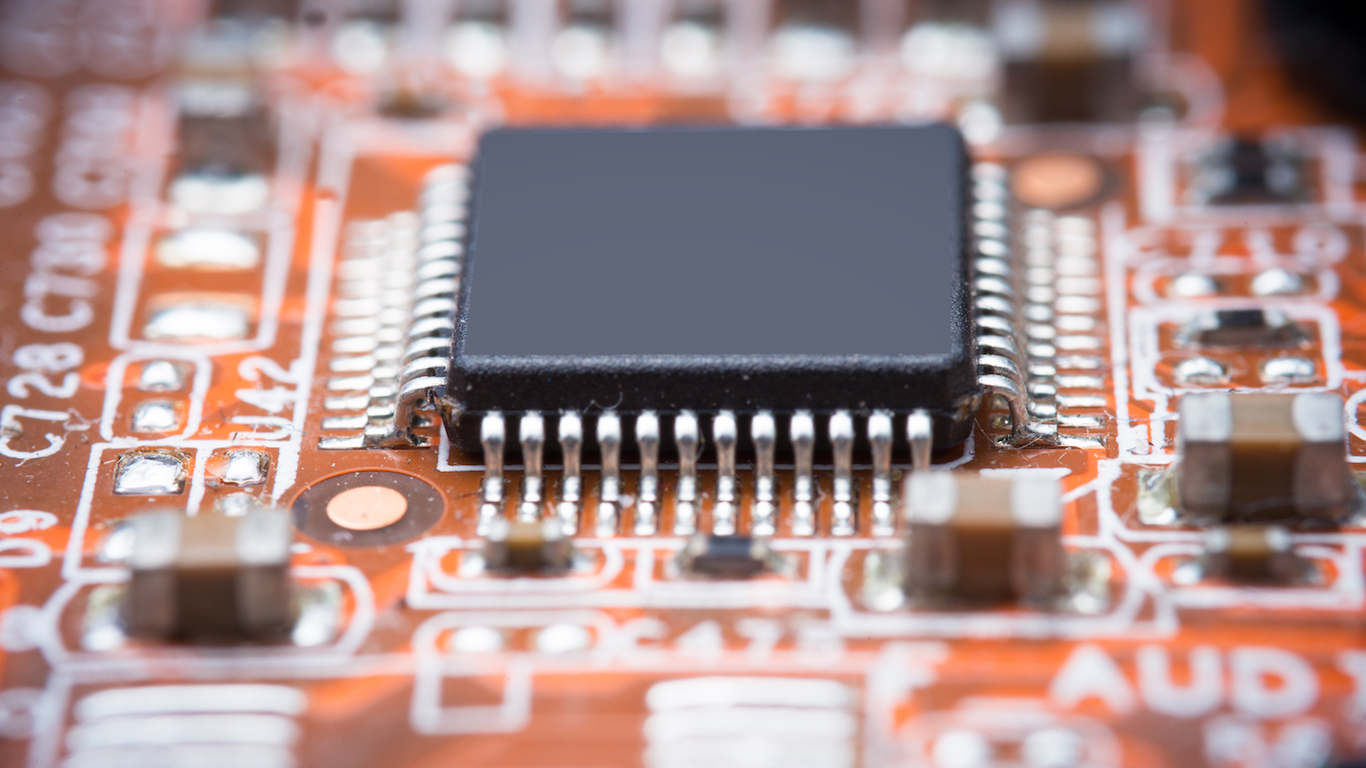
About three weeks ago, the first reports surfaced of a potential $30 billion acquisition of Xilinx (NASDAQ: XLNX) by Advanced Micro Devices Inc. (NASDAQ: AMD). Those reports were confirmed Tuesday morning with a joint announcement that AMD will in fact acquire Xilinx in an all-stock transaction valued at $35 billion.
[in-text-ad]
Xilinx is a leading manufacturer of field-programmable gate arrays (FPGAs), a type of chip that, unlike application-specific devices, can be reprogrammed after the chip has been manufactured. FPGAs are used in all kinds of consumer and electronic devices, including automobiles, aerospace and, of particular interest to AMD, high-performance computing.
In Tuesday’s announcement, AMD claims that the merger with Xilinx will give the combined companies “the industry’s strongest portfolio of high performance processor technologies, combining CPUs, GPUs, FPGAs, Adaptive SoCs [systems-on-a-chip] and deep software expertise to enable leadership computing platforms for cloud, edge and end devices.”
AMD’s CEO, Dr. Lisa Su, commented, “Our acquisition of Xilinx marks the next leg in our journey to establish AMD as the industry’s high performance computing leader and partner of choice for the largest and most important technology companies in the world.”
The merger not only makes AMD more competitive with Intel Corp. (NASDAQ: INTC), also a large supplier of FPGAs, but with rival Nvidia Corp. (NASDAQ: NVDA), which recently closed its $7 billion acquisition of Mellanox, a producer of high-speed interconnection technology for high-performance computing operations. Xilinx’s SmartNIC solutions also offer a similar connectivity product to AMD that levels the playing field somewhat.
Nvidia’s proposed $40 billion acquisition of Arm is already running into some opposition from U.K. regulators and likely to run into more from China. AMD needs to push this deal through regulators in the countries where it does business, including China.
Prior to the Trump administration’s restrictions on supplying chips to China’s Huawei, Xilinx is estimated to have received about 6% to 8% of its $3 billion in annual revenue from the Chinese maker of networking equipment. Now China is threatening to halt imports of foreign-made computers and components by 2022. That’s not good news for AMD, Nvidia, Intel, Arm or Xilinx.
AMD will exchange 1.7234 shares of newly printed stock for each Xilinx share, representing a cash value per Xilinx share of about $143. Once the transaction closes, now expected by the end of next year, current AMD shareholders will own about 74% of the combined company and Xilinx shareholders will own the rest.
According to AMD, the deal would boost the company’s margins, earnings per share and free cash flow generation. Could that mean a dividend?
Investors turned their backs on AMD shares following the announcement. The chipmaker’s stock was down nearly 3% to $79.84, in a 52-week range of $32.03 to $94.28. The price target on the shares is $80.79, and AMD does not pay a dividend.
Xilinx shares traded up more than 10% to post a new 52-week high of $130.40 just after the opening bell. Shares recently traded at $125.85, up about 9.8%. The 52-week low is $67.68, and the consensus price target on the stock is $110.17. Xilinx pays a dividend yield of 1.33%.
Thank you for reading! Have some feedback for us?
Contact the 24/7 Wall St. editorial team.





